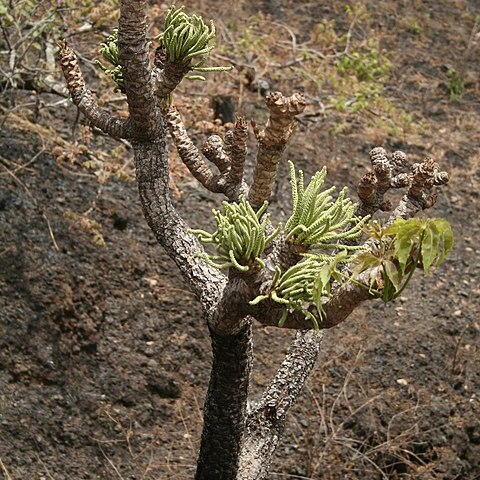A small tree. It grows up to 9 m high. It loses its leaves. The stem produces gum when cut. The leaves are like fingers on a hand and there are 7-9 lobes. The leaf stalk is 12-16 cm long. The flower spikes are 20-40 cm long. They are densely covered with small flowers. The fruit are very small. They are round and black when ripe.
Leaflets 5–9(10), up to 27 × 8 cm., sessile but with long, very narrowly tapering cuneate bases, chartaceous to somewhat coriaceous, glabrous or with occasional hairs; apex acute to acuminate; margins more or less regularly serrate-crenate to more or less entire, rarely deeply and jaggedly cut.
Flowering spikes up to 26 together, but frequently of c. 10–12, at first short and congested, but elongating as the flowers mature, and further as the fruit develop, up to 50 cm. in length. Axis of the spike densely puberulous; basal bracts broadly triangular.
Leaves digitately compound (palmate in juvenile states) Petiole up to 50(87) cm. long, usually glabrous but sometimes somewhat puberulent in patches.
Flowers sessile with floral bracts that are conspicuous in the unexpanded spikes, but insignificant and more or less caducous before maturity.
Stylopodium quite well developed; stigmatic surfaces very small, scarcely freely diverging at the tip.
Fruit ovoid-cylindrical to subglobose, 4–5·5 × up to 4 mm., glabrous or more rarely puberulous.
Robust tree up to 11 m.


